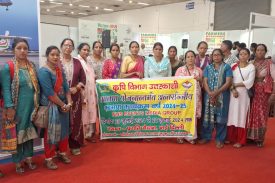About Department
The organizational set up of agriculture in India started with the Department of Revenue and Agriculture and commerce in 1871 during the period of Lord Mayo (Governor- General of India). Department of agriculture was established in year 1875. In the beginning, the work of this department was limited to collection of data and establishment of […]
Read More-
 Hon'ble Chief Minister
Hon'ble Chief MinisterShri Pushkar Singh Dhami
-
 Hon'ble Agriculture Minister
Hon'ble Agriculture MinisterMr. Ganesh Joshi
-
 Secretary Agriculture and Farmer Welfare
Secretary Agriculture and Farmer WelfareDr. Surendra Narayan Pandey IAS
-
 Director General
Director GeneralMs Vandana Singh, IAS
Agriculture Statistics Data
This section display the departmental Agriculture Statistics Data regarding Different Crops.
Agriculture Statistics DataSchemes
All public schemes / Programmes / Activities formulated by department administration are displayed...
Schemes/Programmes























